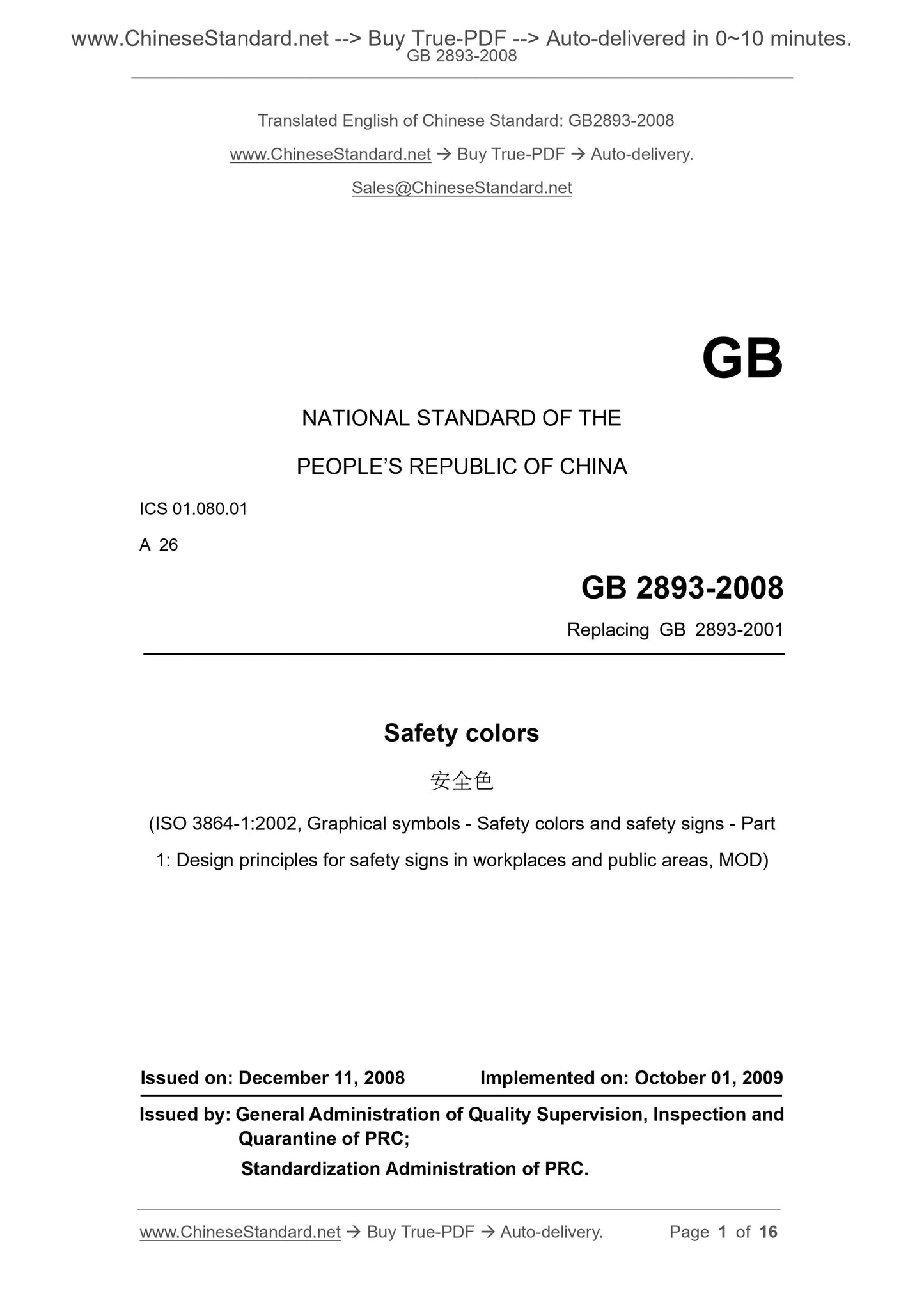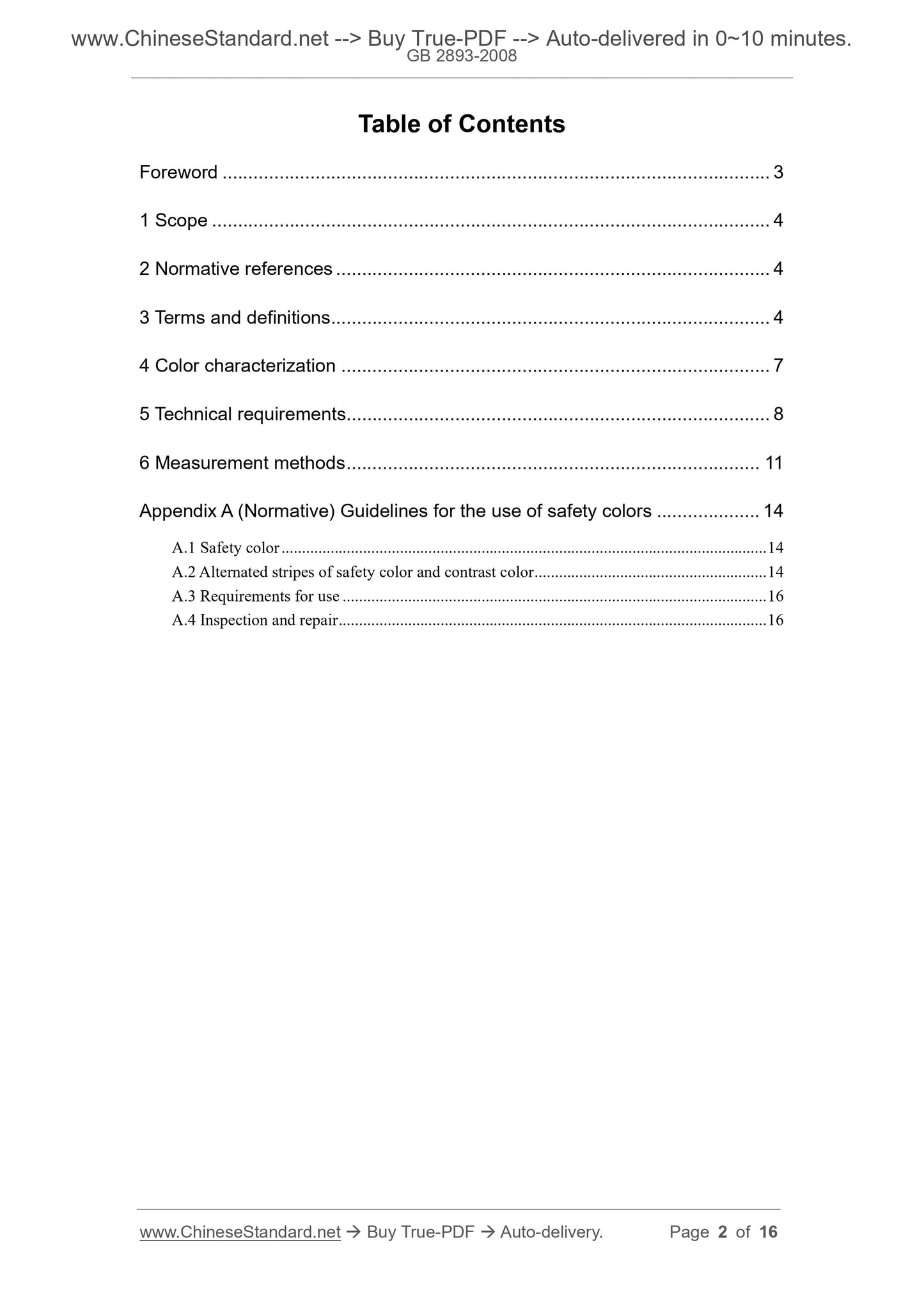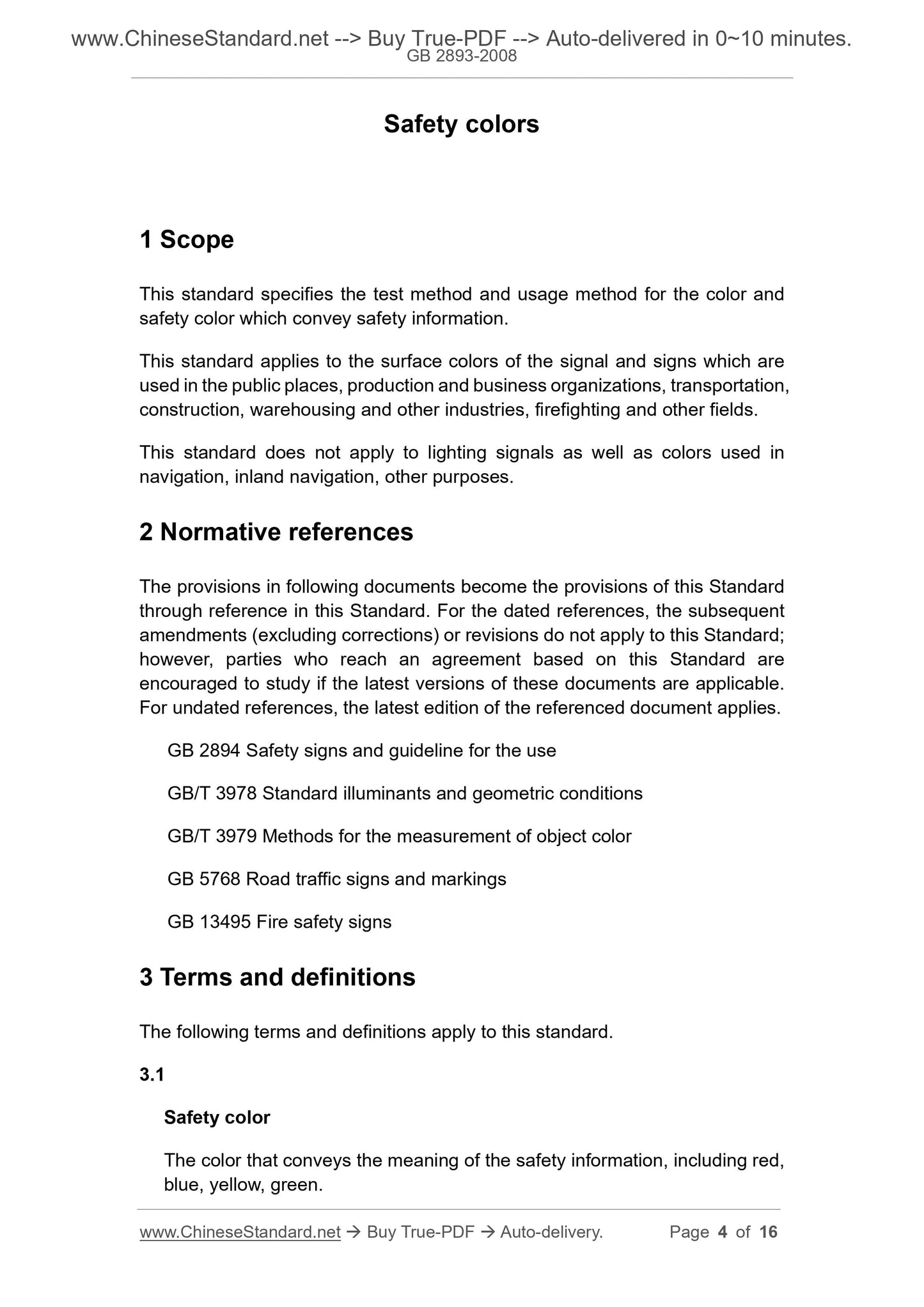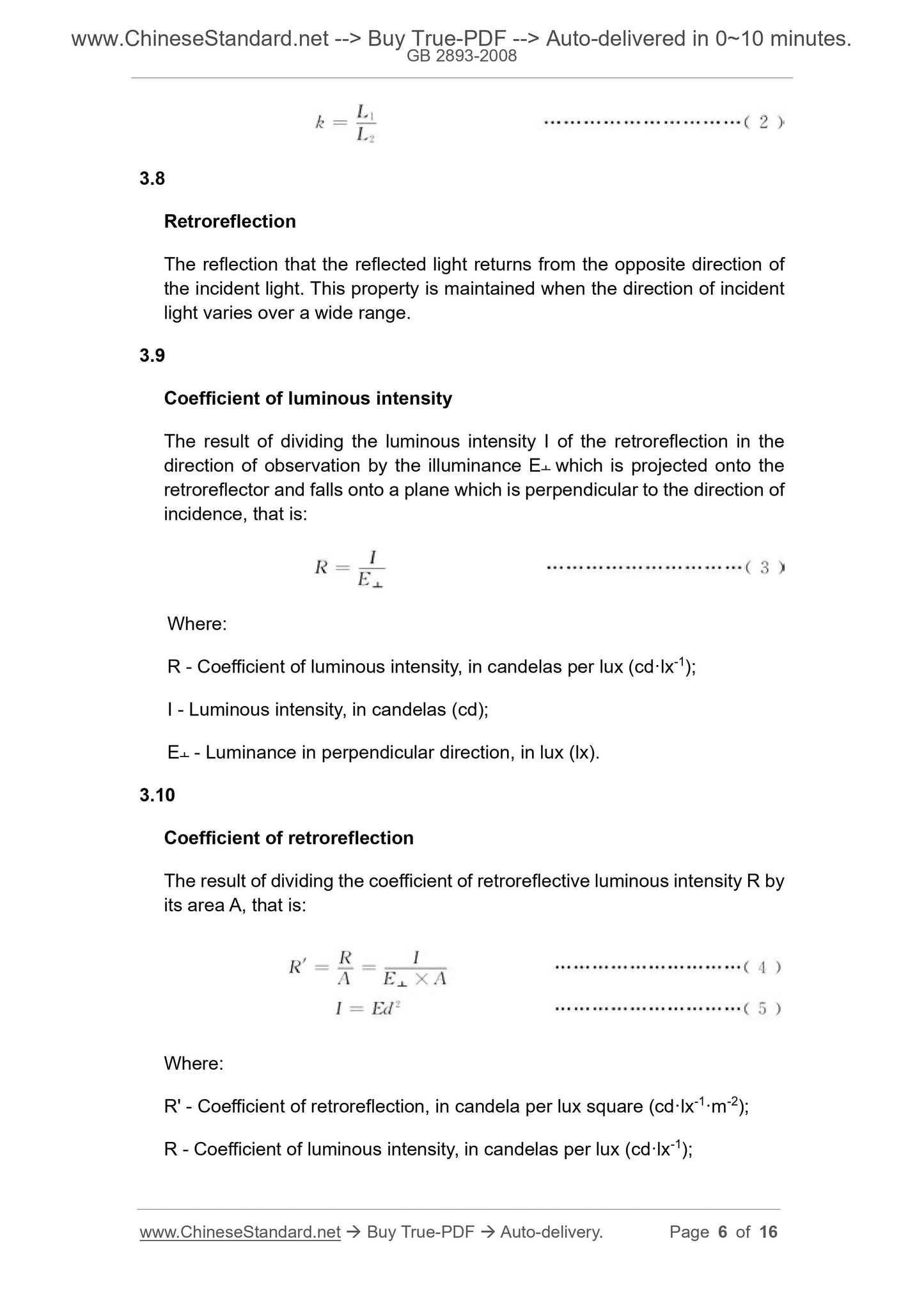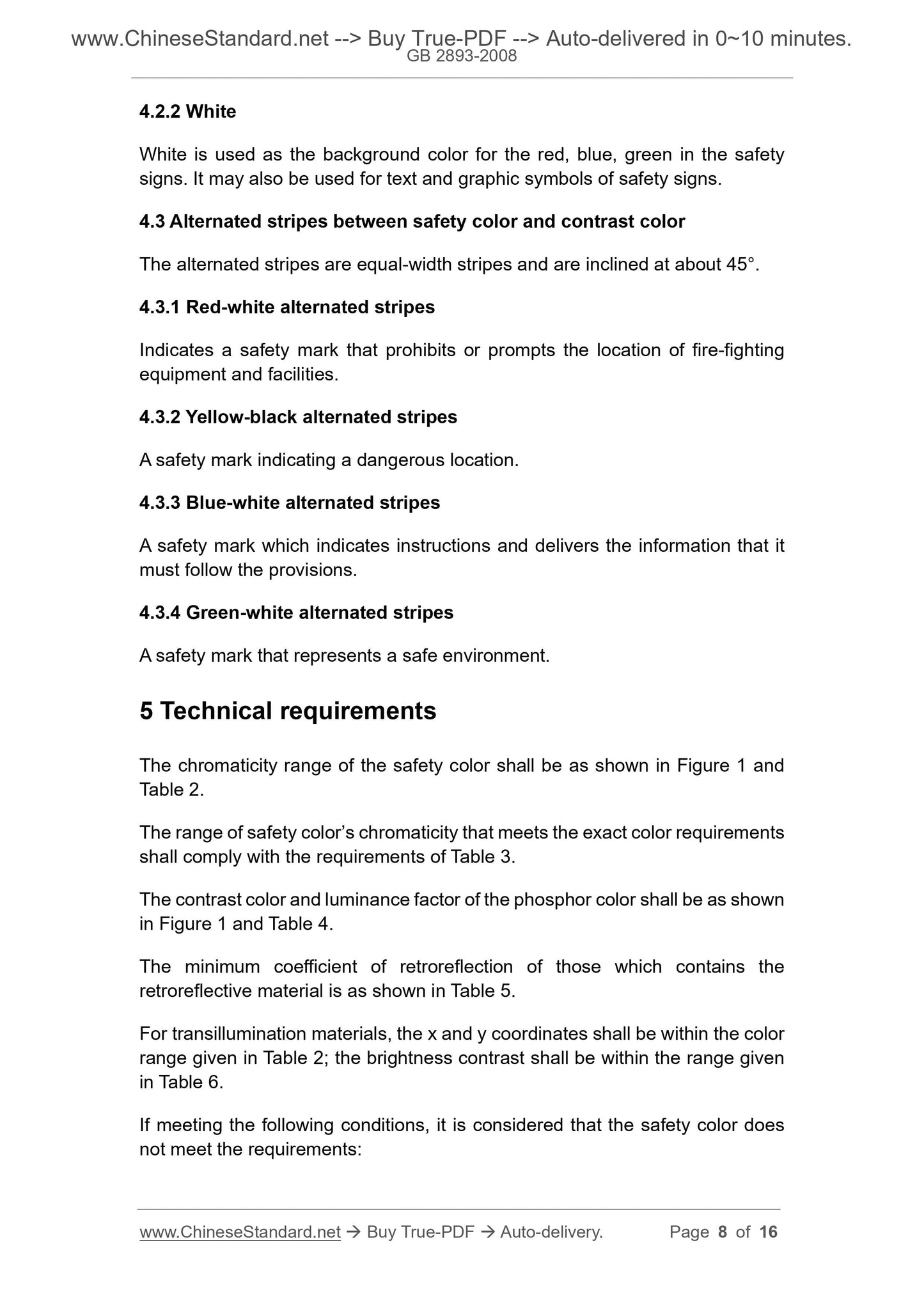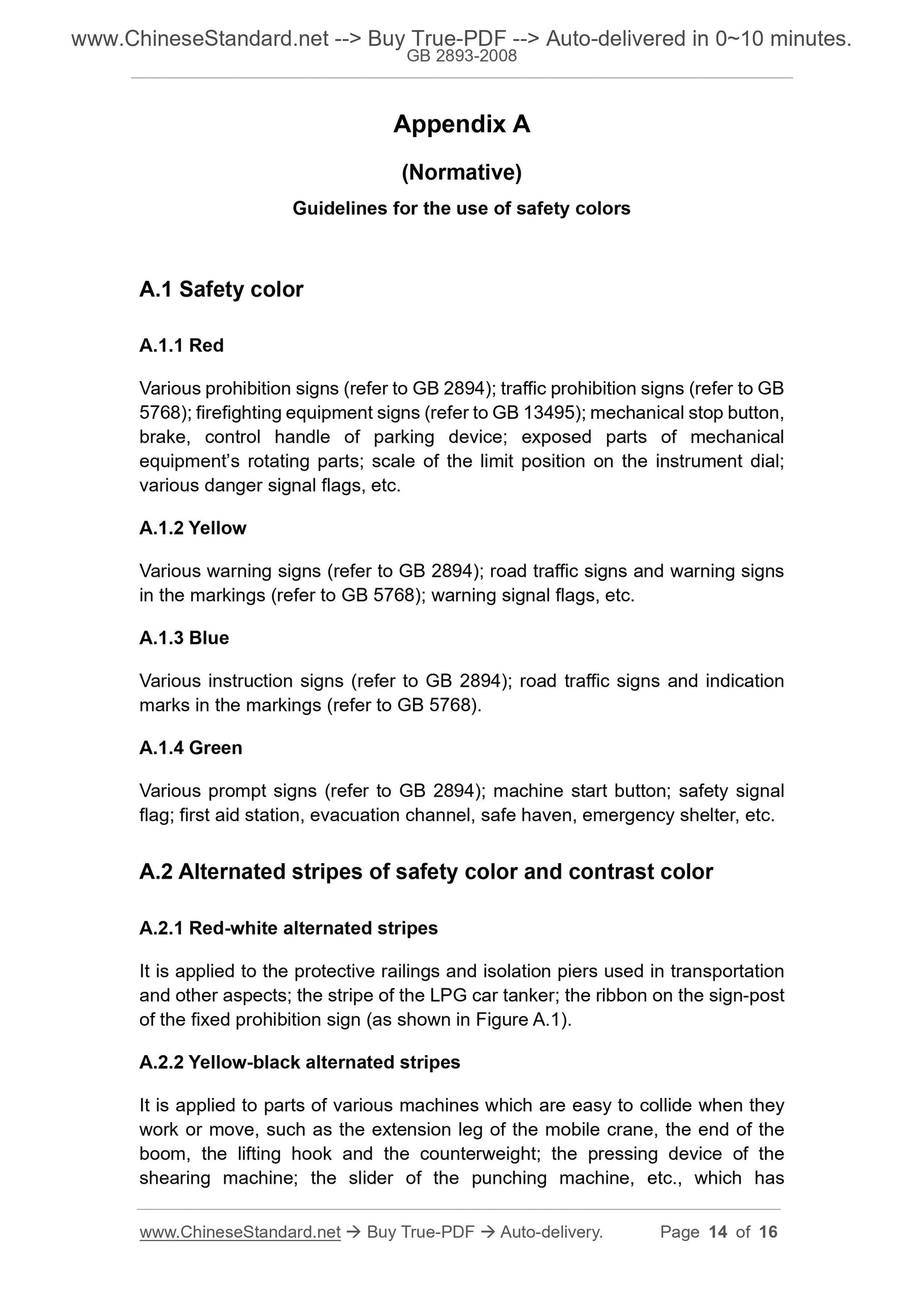1
/
of
6
PayPal, credit cards. Download editable-PDF & invoice in 1 second!
GB 2893-2008 English PDF
GB 2893-2008 English PDF
Regular price
$70.00
Regular price
Sale price
$70.00
Unit price
/
per
Shipping calculated at checkout.
Couldn't load pickup availability
GB 2893-2008: Safety colours
Delivery: 9 seconds. Download (and Email) true-PDF + Invoice.Get Quotation: Click GB 2893-2008 (Self-service in 1-minute)
Newer / historical versions: GB 2893-2008
Preview True-PDF
Scope
This standard specifies the test method and usage method for the color andsafety color which convey safety information.
This standard applies to the surface colors of the signal and signs which are
used in the public places, production and business organizations, transportation,
construction, warehousing and other industries, firefighting and other fields.
This standard does not apply to lighting signals as well as colors used in
navigation, inland navigation, other purposes.
Basic Data
| Standard ID | GB 2893-2008 (GB2893-2008) |
| Description (Translated English) | Safety colours |
| Sector / Industry | National Standard |
| Classification of Chinese Standard | A26 |
| Classification of International Standard | 01.080.01 |
| Word Count Estimation | 14,128 |
| Date of Issue | 2008-12-11 |
| Date of Implementation | 2009-10-01 |
| Older Standard (superseded by this standard) | GB 2893-2001 |
| Quoted Standard | GB 2894; GB/T 3978; GB/T 3979; GB 5768; GB 13495 |
| Adopted Standard | ISO 3864-1-2002, MOD |
| Regulation (derived from) | Announcement of Newly Approved National Standards No. 19 of 2008 (No. 132 overall) |
| Issuing agency(ies) | General Administration of Quality Supervision, Inspection and Quarantine of the People's Republic of China, Standardization Administration of the People's Republic of China |
| Summary | This Chinese standard specifies the safety message of color, the color of the test methods and safe use. This standard applies to public places, production units and transport, construction, warehousing and other industries as well as fire and other areas used by the surface color signals and signs. This standard does not apply to light signals and navigation, inland navigation and other purposes, the use of color. |
Share
